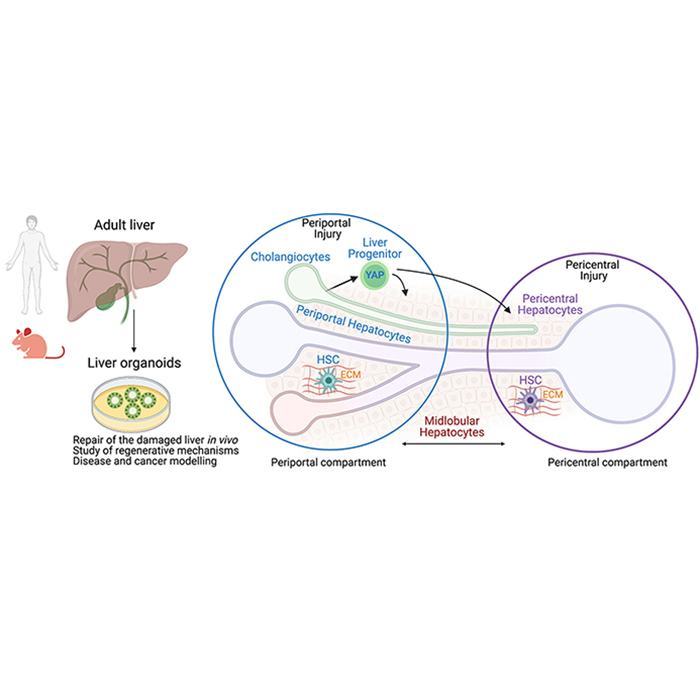Review in Seminars in Cell and Developmental Biology for Luigi Aloia
In his review in Seminars in Cell and Developmental Biology, Luigi Aloia discusses the link between liver spatial geometry and the tissue's extraordinary regenerative capacity.
Article abstract:
The adult liver exerts crucial functions, including nutrient metabolism and storage, bile production and drug detoxification. These complex functions expose the liver to constant damage induced by toxins, metabolic intermediates and oxidative stress. However, the adult liver exhibits an exceptional regenerative potential, which allows fast and efficient restoration of tissue architecture and function both after tissue resection and toxic damage. To accomplish its vital role, the liver shows a peculiar tissue architecture into functional units, which follow the gradient of oxygen and nutrients within the parenchyma. Much less is known about the influence of tissue spatial geometry and functional organisation on adult liver regeneration. Here I examine the experimental evidence in mouse models showing that the spatial organisation of the epithelial and mesenchymal compartments plays a key role in liver regeneration and favours the establishment of regenerative adult liver progenitors following liver injury. I also discuss the advantages and limitations of human and mouse 3D hepatic organoid systems, which recapitulate key aspects of liver function and architecture, as models of liver regeneration and disease. Finally, I analyse the role of the YAP/TAZ transcriptional co-activators as a central hub sensing the extra-cellular matrix (ECM), metabolic and epigenetic remodelling that regulate liver regeneration and promote liver disease, such as fibrosis, chronic liver disease and liver cancer. Together, the findings summarised here demonstrate that local physical and functional cellular interactions determined by the liver peculiar spatial geometry, play a crucial role in liver regeneration, and that their alterations have important implications for human liver disease.
 Close
Close


